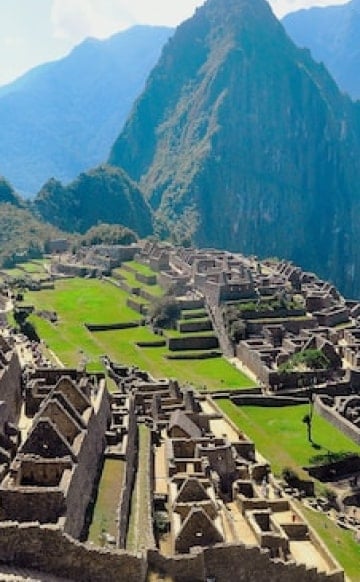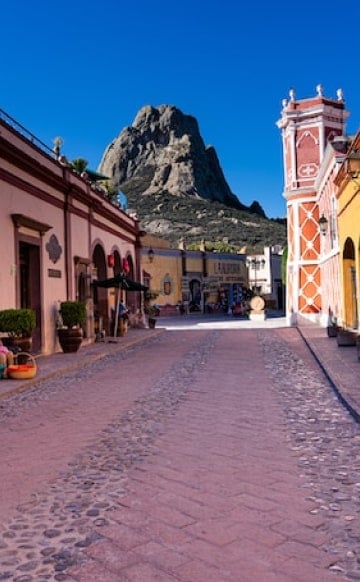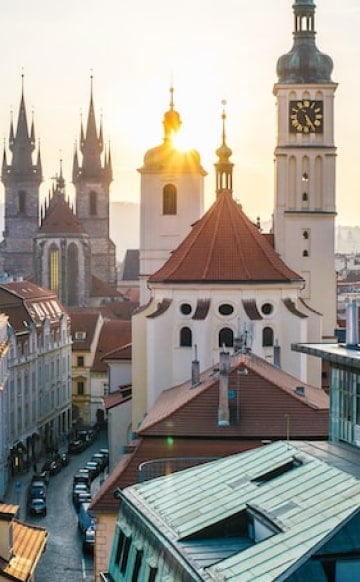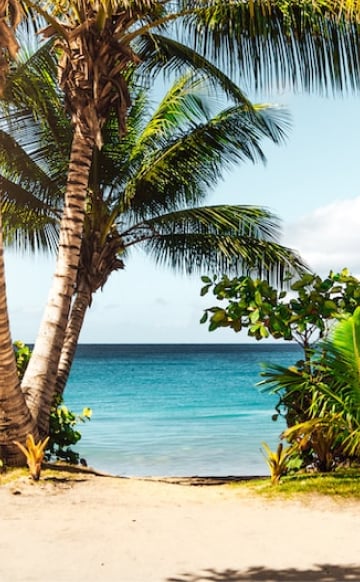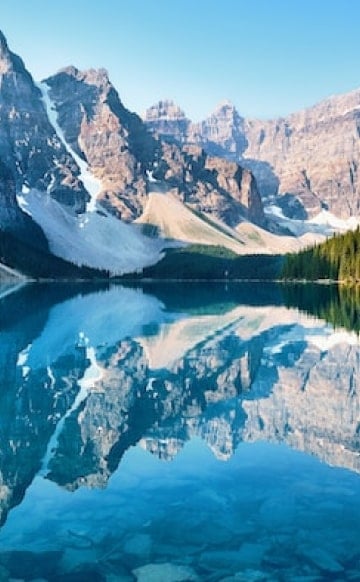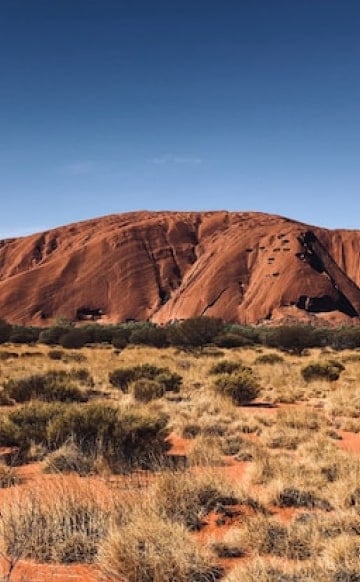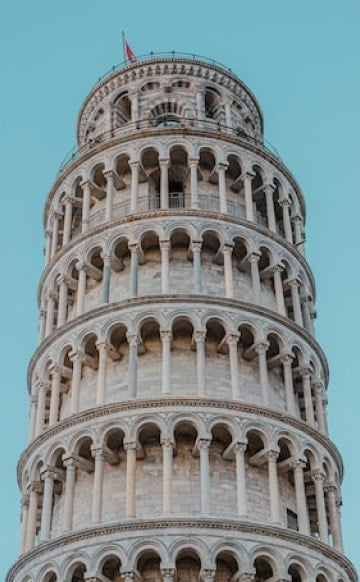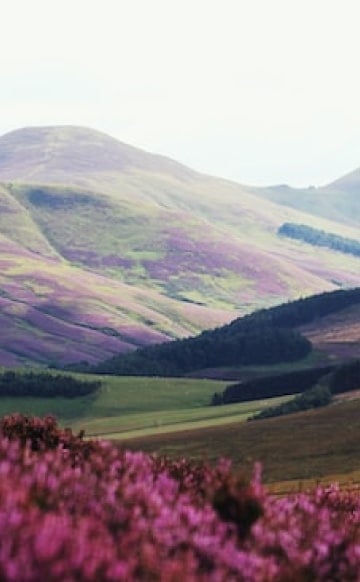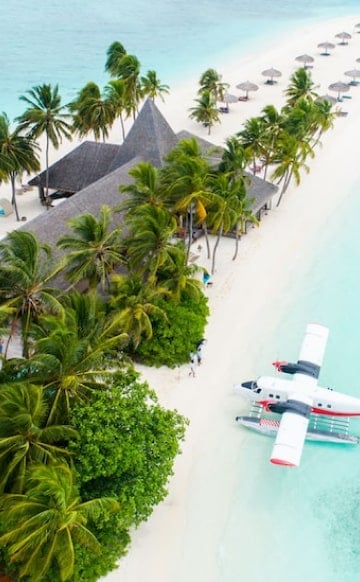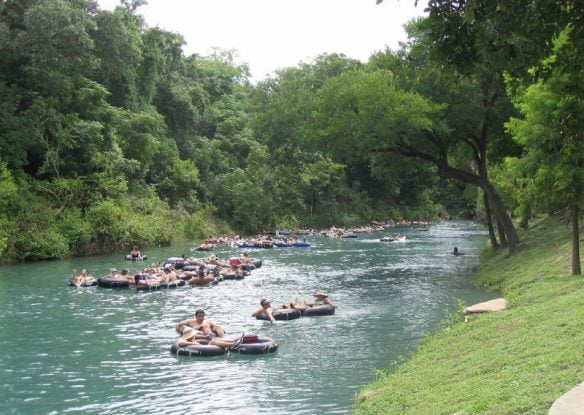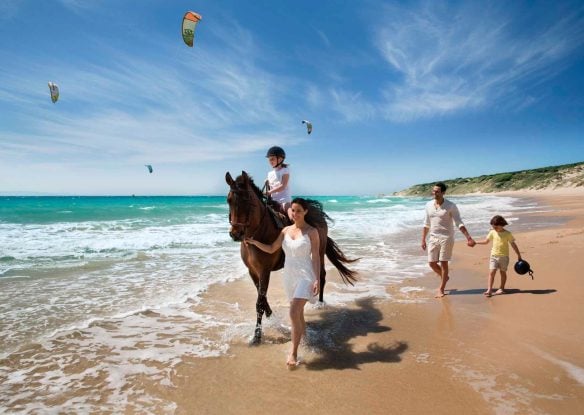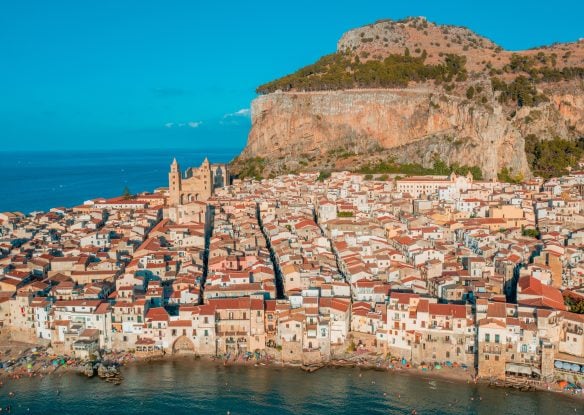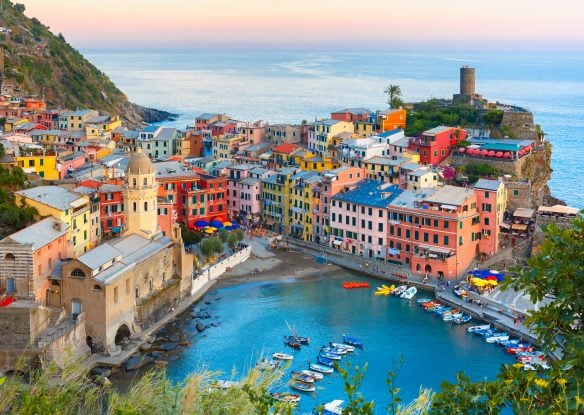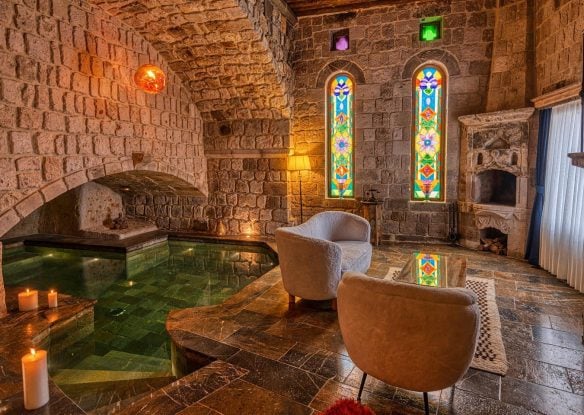When visiting Europe, many travelers tend to automatically envision cities like Paris, Rome and London, the endless museums, nightlife, historic sites, and perhaps, castles. But just like here in the U.S., Europe is home to a multitude of beautiful national parks. While you’re there, why not enjoy the opportunity to visit one or more, providing a great way to experience picture-perfect landscapes, enjoy fresh air, peace and quiet.

Vatnajökull National Park, Iceland
Iceland is all about out-of-this-world scenery, although its coastal capital of Reykjavik is renowned for its late-night clubs, bars and museums that trace its Viking history. Once you’ve explored the city, you’ll want to put its most stunning sights and attractions on your itinerary, including Vatnajökull National Park, a 5,300-square-mile park which offers the unique opportunity to experience a wide range of contrasting natural wonders characterized by the perpetual struggle of fire and ice. A top thing to see in Iceland, you can catch a glimpse of the largest glacier in Europe, Vatnajökull, which lends its name to the park, with the white glacier descending to black sands, fiery streams erupting from frozen ice banks and the country’s highest mountain towering over its deepest proglacial lake. Years of erosion have left incredible ice formations on the massive ice sheet that covers nearly 13 percent of the country, which ice climbers can explore with local guides. The park is also home to Glacier Lagoon, Jökulsárlón, one of Iceland’s greatest natural wonders. Massive blocks of ice constantly break off the glacier, while large icebergs float across the lagoon.

Goreme National Park and The Rock Sites of Cappadocia, Turkey
Goreme National Park is an amazing and unique design of nature. This striking landscape was entirely sculpted by erosion, with the valley and its surroundings filled with rock-hewn sanctuaries that offer evidence of Byzantine art in the post-Iconoclastic period. The dramatic, unusual rock formations for which the park is famous, resemble columns, pillars, obelisks, needles and fingers, reaching up to 130 feet tall. With the smooth irregularity of the formations, they appear as if they’ve been sloppily molded out of clay. The hermitage of Simeon monks dedicated a chapel which was carved into a three-headed fairy chimney to Saint Simeon, while some of the earth pillars in the area were hollowed out and used as refuges for hermits. Cappadocia has been the seat of several civilizations and covers underground cities, with some of the most extraordinary including the regions ofKaymakli, Derinkuyu, Mazl Ozkonak and Tatlarin. Used as sanctuaries for long periods, they were recently renovated and made available to visitors.

Plitvice Lakes National Park, Croatia
Not well-known by those outside the region, Plitvice Lakes National Park is one of the most breathtaking natural landmarks in all of Eastern Europe, if not the entire continent. Its maze of lakes and waterfalls, lush greenery and clear azure waters, is so fantasy-like it seems as if it were computer generated and plunked right down in Croatia. Located in the country’s rugged interior, the 16 terraced, crystalline lakes are laced together by waterfalls and miles of plank walks. A must-see in Croatia, the mineral-rich waters carve through the rock, depositing tufa in continually changing formations while the pathways wind around the edges, underneath and across the gurgling water. You can choose from several different paths around the lakes that range in time and difficulty. A complete run-through of the park on Trail H takes upwards of six hours – while it can be done in as few as four if you move quickly, you’ll want to take your time to revel in the scenery. Some trails also offer boat transfers and bus transfers which can slice a couple of hours off the trek.

Belluno Dolomites National Park, Italy
Belluno Dolomite National Park, or Dolomiti Bellunesi Parco Nazionale as Italian’s refer to it, is a marvel that surpasses just about any of the country’s famed museums. Though the park is fairly easy to access, just an hour and a half’s drive from Venice, it remains largely wild and unspoiled. Named for the Dolomites, the breathtaking mountain range that spans five northeastern territories, visitors can enjoy hiking, biking, winter sports and wildlife watching. The park itself can only be driven by car over two roadways, but hikers will find a true paradise with miles and miles of hiking trails, including the Dolomite mountain trail No. 1 which winds through the park. The ancient town of Belluno, with 37,000 residents is the main town in the eastern Dolomites and makes an ideal place to base your stay.

Olympus National Park, Greece
This 92-square-mile park is home to one of the most famous mountain ranges in the world – the 52 peaks of Mount Olympus that were believed to be the home of the gods by the inhabitants of classical Greece. The village of Dion, which sits on the mountain’s flanks, was a Macedonian holy city where King Archelaus held nine days of games to honor Zeus, several centuries B.C. Today, it’s one of Greece’s most famous destinations, housing a remarkable archaeology site where work is ongoing, along with an archaeological museum that features much of the region’s rich Classical history. The park is also home to numerous animal species like lynx, wolves, fox, jackals and wild boar, along with more than 108 bird species as well as over 1,700 plants that can be found on Mount Olympus, representing 25 percent of all Greek flora.

Loch Lomond and the Trossachs National Park, Scotland
Loch Lomond and the Trossachs National Park is one of the largest at 720-square-miles, as well as one of the most beautiful national parks in the U.K. The park is renowned for its magnificent mountain scenery and 22 lochs, the most famous being Loch Lomond with its crystalline waters that have been immortalized in song. Soaring mountains loom to the north, while a scattering of islands are dotted along its south end and picturesque villages like Luss line its western shores. Accessible beaches around Lomond’s shores also make it ideal for summer swimming. Argyll Forest Park, located at the western edge of the national park, is typified by ancient trees, tranquil lochs and an abundance of wildlife. Ben Arthur is also set within the park, often referred to as “the Cobbler,” one of Scotland’s most popular climbs.

Durmitor National Park, Montenegro
Home to some of the most jaw-dropping scenery in all of Europe, Durmitor covers the Durmitor Mountain Range and a narrow branch heading east along the Tara River. The dramatic landscape is home to 48 peaks that tower over 6,500 feet in altitude with the highest, Bobotov Kuk, reaching nearly 8,300 feet. In the winter, the park is a major ski resort, while the warmer months make it ideal for hiking, rafting and other outdoor activities. The wild Tara River slices through the mountains at the northern edge of the park, forming a canyon that at its peak is 4,265 deep – the deepest gorge in all of Europe – Grand Canyon is just 656 feet deeper. Enjoy hikes like the one to the top of Mt Curevac where you can admire the canyon from afar, and afterward, cool off by visiting the ice cave, filled with icy stalactites and stalagmites all year round.

Jostedalsbreen Glacier National Park, Norway
Jostedalsbreen is continental Europe’s largest glacier and the namesake of this spectacular natural park filled with glacial lakes, beautiful waterfalls and dramatic valleys. Out of the fjords, glacier-covered mountains rise for more than 6,500 feet. The highlight of the park is the Briksdal arm, a stunning offshoot of the glacier which cascades down a rocky hill, attracting ice climbers and thrill-seekers for decades. The park is famous for its wide range of natural environments that are all within a short distance of each other, from valleys with lush vegetation to barren mountain and glacier landscapes – just taking a short hike here is like hiking from one season to another.

Swiss National Park, Switzerland
Swiss National Park, located in the eastern canton of Graubünden, is one of the oldest national parks in Europe, opened in 1914, and one of its most beautiful. The 438-square-mile park is home to a mixture of verdant forests, precipitous mountains and deep valleys as well as an incredible variety of birdlife, including the golden eagle and bearded vulture, along with mammal species like red deer, chamois, marmot and the rare Alpine ibex. There are no bicycles, tents, fires or stoves here, so the park is mainly for hiking and wildlife watching. There are nearly 50 miles of hiking trails, including a trek that will take you up one of the loveliest peaks in the park, Alp Grimmels. If you want to spend the night, you’ll have to stay at Chamanna Cluozza, a charming wooden guesthouse that offers food as well as accommodation with gorgeous views of the valley and surrounding mountains.

Bay of Orosei and Gennargentu National Park, Italy
Sardinia’s Bay of Orosei and Gennargentu National Park offers a nearly always sunny retreat with bright blue skies, rocky cliffs, secluded beaches and sapphire-hued waters. Known locally as the Parco Nazionale del Golfo di Orosei e del Gennargentu, it can be found along the eastern coastline of Sardinia and includes the Gennargentu Mountain Range as well as the Bay of Orosei. In addition to housing the island’s only ski resort, it’s also home to one of the prettiest beaches in the Mediterranean, Cala Luna Beach, a crescent of white sand backed by high limestone cliffs, and a wide variety of animals, including the Sardinia wildcat, the Mediterranean monk seal, the Sardinian fox, weasel and marten. Numerous bird species can be found here too, including the peregrine falcon and golden eagle.

Oulanka National Park, Finland
Located in Lapland near the border of Russia in Finland, Oulanka National Park is home to stunning natural scenery, a misty forest and roaring rivers. In this rugged, magnificent landscape you’ll find a variety of trail options and hanging bridges that will bring you to some of Finland’s most impressive waterfalls. The Karhunkierros trail, the most popular hiking route, is a 50-mile trek that can take up to seven days to complete, though you can stay overnight for free in logs huts that are dotted along the way. You can also canoe the quick flowing rapids of the Oulankajoki River or more easy-going routes that head downstream. The park is especially renowned for its reindeer and the pink-and-white calypso orchid, its emblem, which is scarcely seen anywhere else, but common here.

Peneda-Gerês National Park, Portugal
Parque Nacional da Peneda-Gerês, Portugal’s first and only national park, established in 1971, is spread across four impressive granite massifs in the country’s northernmost reach. Here, wild garrano ponies trot around freely, and visitors can even arrange to hop on the back of one of the domesticated ponies through the oak and pine forests, boulder-strewn peaks and precipitous valleys. This area is not only known for its incredible natural beauty but its compelling remains of human occupation, with a Roman road winding through it, marked with 2,000-year-old milestones. The park also shelters more than 100 granite villages that seem to have changed little since Portugal’s beginnings in the 12th century. If you happen to be here on a Friday the 13th, don’t miss the Noite das Bruxas, a street party fueled by queimada, a local liqueur sipped with honey – it’s held in the village of Montalegre, just beyond the eastern border of the park.

Sarek National Park, Sweden
Often referred to as Sweden’s last true wilderness, Sarek National Park has remained unspoiled, with its rugged expanse in northwest Sweden featuring roaring rivers, some 100 spectacular glaciers and six stunning peaks. Its high mountain area is similar to the Alps with its towering massifs and deep valleys like the Rapa Valley, with its magnificent delta and rich wildlife. Not easily accessible, this park is for the adventurous, including experienced hikers and mountaineers. There are no marked trails, cabins or other amenities – but what makes it so great is that you’re far more likely to bump into the occasional wild animal (brown bear, lynx, wolverine and moose among others) than your neighbor.

Saxon Switzerland National Park, Germany
Saxon Switzerland National Park, located near Dresden, bordering the Czech Republic’s Bohemian Switzerland National Park, is home to especially unique landscapes, like its dense fern groves, thick forests and towering conifers that cling to bizarrely-shaped cliff faces. The park is best known for its wild landscape of Elbe sandstone formations, with the cliffs, mesas, gorges and spires of the “city in stone,” resulting from over 100 million years of work by wind and the waters of the Elbe River and tributaries that flow into the North Sea. Visitors can watch for eagle owls, dormice and otters or enjoy rock climbing, a popular activity that draws many travelers to this area. Renting a rowboat or taking a boat excursion to admire the scenery from the river is a great way to explore the park too.

Pyrenees National Park, France
Located along the border of France and Spain, the wild Pyrenees are made up of giant, sculpted mountains, cascading falls and glistening lakes. The mountainous landscape offers a variety of outdoor adventures, including hiking, skiing and mountain climbing as well as watching wildlife. The park’s most fascinating inhabitant is a close relative of the mole known as the Pyrenean desman. The creature has a trunk-like nose, webbed feet and a mole-like body. It lives here, and almost nowhere else, feeding on small shellfish and insect larvae along the banks of crystal streams. While you’re here, take the Little Train, a unique tiny railway that will bring you on a precipitous narrow-gauge journey, the start of which is reached via cable car. This unforgettable six-mile trip stretches from the peak of La Sagette to Artouste at an elevation of more than 6,562 feet.

Lake District National Park, England
The Lake District National Park in Northern England, the country’s largest national park, is a bucolic expanse of rambling forests, stonewalled fields, whitewashed cottages, sparkling lakes and scenic farmland with a romantic atmosphere that made it famous with many 19th-century poets. It has an almost-fairytale-like feel, while each lake and valley has a distinct character of its own. Popular with hikers, the park is home to the highest peaks in England, including Scafell Pike which stands at 3,210 feet. While these mountains, known as “fells,” locally, may be modest compared to some of the world’s great ranges, their beauty is well worthy of acclaim. In addition to lots of walking opportunities, you’ll find plenty of chances to splash around as the name suggests, including Wastwater, the deepest lake in England at 243 feet.

Cinque Terre National Park, Italy
One of Italy’s most breathtaking regions is revered across the globe for its incredible beauty. The country’s smallest national park, it was named for the five cliff towns that overlook the Mediterranean Sea, situated in Liguria in northern Italy. The crazily constructed villages date from the early medieval period, with its oldest, Monterosso, founded in 643 AD, though much of what remains today dates from the late High Middle Ages, including several castles. This dream setting for romance offers the chance to enjoy glorious sunsets over cerulean waters, picturesque harbor villages, spectacular hiking trails and beachfront promenades. Of course, it also comes complete with lots of pasta and wine – several area villages produce their own wines made using local grapes.

Ordesa National Park, Spain
This 60-square-mile area bordering France is Spain’s oldest national park, renowned for some of the best hiking in the Pyrenees, but it remains little-known outside of the Spanish border. Famed for its nearly two-mile-deep glacial valleys which all come to a head at towering 11,000-feet-high Monte Perdido, it offers trails for all levels of fitness, including paths along “sajas,” or natural ledges in the limestone, some of which are only a few feet wide. Visitors will see raging rivers and waterfalls, vertical rock faces and dense woodland as well as wildlife. The forests here are home to wild boar, marmot, golden eagles, bearded vultures and a rich variety of other birds.

Snowdonia National Park, Wales
Snowdonia National Park is home to the biggest mountain in Wales, at 3,560 feet, and some of the most stunning landscapes in the country, filled with mountains as well as forests, lakes and valleys. There are nine mountain ranges that cover fully half of the park with a magnificent array of jagged peaks, windswept uplands and gorges. Legend has it that King Arthur himself fought an epic battle on the top of Snowdon with the king-killing giant Rhita Gawr. This popular destination for mountain bikers and hikers also offers the chance to experience the region’s long human history by visiting Neolithic burial cairns or Roman Forts. For those that enjoy train rides, the scenic nine-mile journey on the Bala Lake Steam Railway along the shores of Bala Lake offers the chance to take in more gorgeous views as well as to watch for the lake’s resident “monster” known as “Teggie.”

Ecrins National Park, France
Located in the south-eastern part of France, Massif des Ecrins is one of the most stunning mountain regions in the European Alps. It boasts all of the scenery you’d expect and more, including babbling brooks, glistening lakes, alpine pastures, glacial fields and soaring mountainous areas. Hikers and climbers are particularly attracted to the park, with its more than 100 mountain peaks that are over 9,800 feet high. Be sure to keep an eye out for some of the wildlife that call this area home, including ibex, marmot, black grouse, eagles and stoats.

